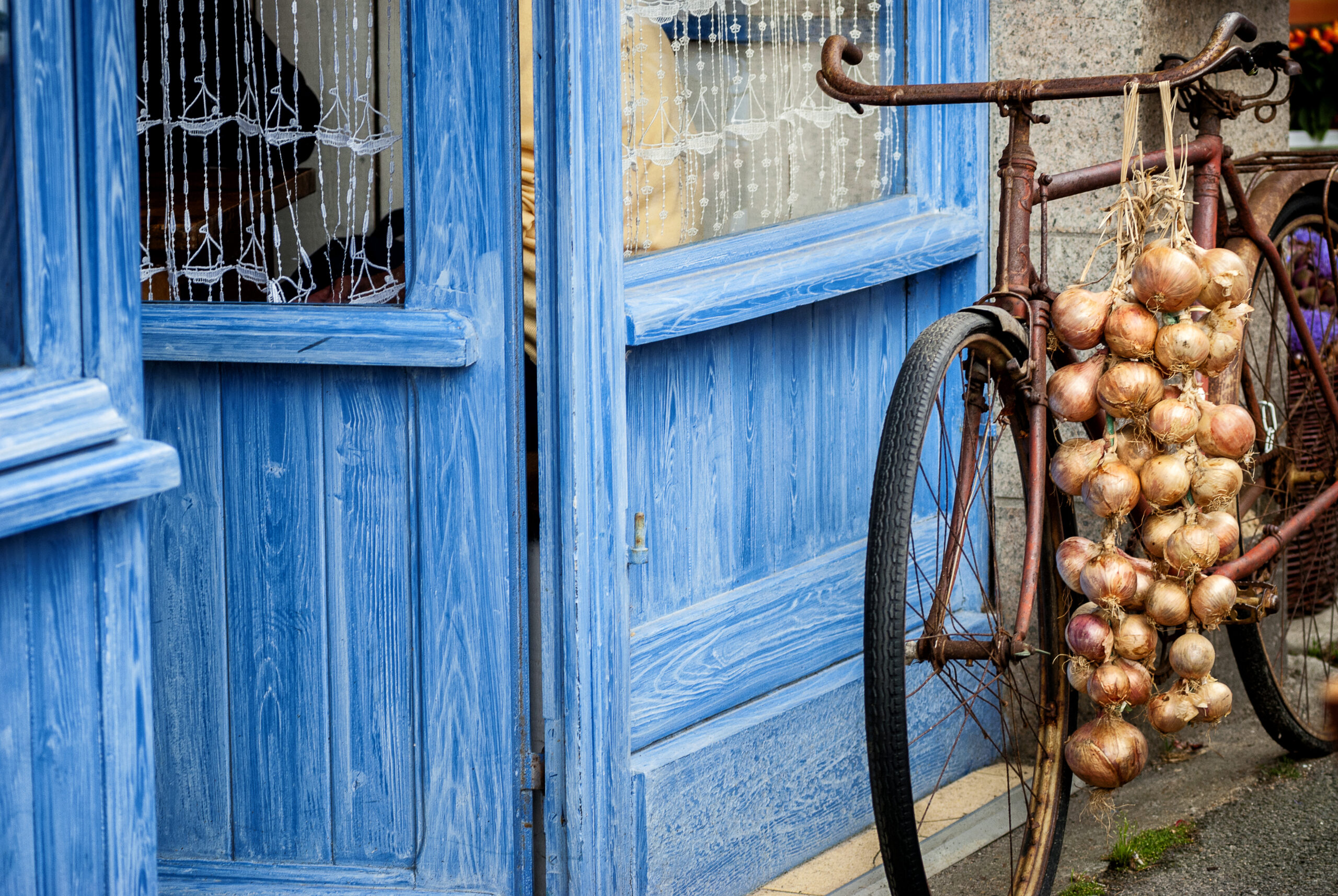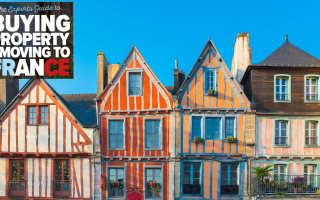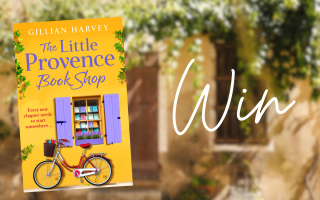Roscoff: More than just a ferry port

With its maritime heritage, tropical gardens and proximity to sublime sandy beaches, Roscoff is so much more than just a ferry port across the Channel
Let me tell you about Roscoff, which is swimming distance from the UK and described by the tourist board as “the most British of Brittany’s ports”. Situated in north-west France on Finistère’s invitingly named Sandy Coast, it is connected to Plymouth by a six-hour Brittany Ferries ferry trip from March to October, yet it brims with the joys of French living.
Like St-Malo to its east, Roscoff is a maritime town par excellence. More than just a disembarkation point, it is a destination in its own right and the hub of a coastline famous for its white sandy beaches, dune banks and enormous granite boulders.
Roscoff began as Roskogoz, a tiny fishing hamlet on the south-west of the peninsula, used as a harbour by the nearby ancient town of St-Pol-de- Léon. After repeated attacks by the English and silting up of its harbour, its medieval inhabitants moved north and began building the town we know today.
Hundreds of years before local farmers clubbed together to set up Brittany Ferries in 1972, Roscoff was already doing a roaring trade in cloth, salt and wood, not to mention the spoils of corsairs, the French privateers authorised by the crown to raid enemy ships.
Today, Roscoff is officially listed as a Petite Cité de Caractère. Its rich heritage is reflected in the elaborate granite houses that belonged to ship owners in the 16th and 17th centuries, and in the cobbled streets and lanes once haunted by merchants, corsairs and smugglers.
Thanks to the Gulf Stream, the area has a mild climate and the botanical garden near the marina could fool you into thinking you were on a tropical island. The feeling is only heightened by a trip to the island of Batz, 15 minutes off the coast, where tropical plants thrive alongside the cultivated fruits, vegetables, hollyhocks and hydrangeas. Explore the magnificent coastal paths on foot or by bike and the creeks and beaches by sail and kayak.
Back on the mainland, artichokes growing on spiky stems in the fields around Roscoff strike a quirky note in the summer, but the town is even more famous for its pink onions. I remember as a child in southern England being excited when Breton farmers, known as Johnnies, came to town. Their uniform of striped jersey, black beret and necklace of rose-coloured onions came to epitomise the stereotype of the Frenchman.
The Roscoff onion has an AOP protected appellation and the town, twinned with Great Torrington in north Devon, holds its annual onion festival at the end of August.
In 1899, France’s very first thalassotherapy centre opened in Roscoff, offering seawater cures for rheumatism, and the town is also renowned as a centre of seaweed production and marine biology research.
South of Roscoff, meanwhile, you will find some of Brittany’s celebrated enclos paroissiaux. Unique in Europe, these elaborate parish churchyards encompassing a church, belfry, ossuary, calvary, cemetery and triumphal arch, are an indication of the religious fervour and artistic talent of local artisans from the 16th to the 18th century.
However, in the 1950s, Brittany was a poor region that had inadequate infrastructure, and the farming community were at the mercy of traders in Paris who set prices and volumes meaning they were left with unsold vegetables. The farmers called for change and Alexis Gourvennec, a Breton pig farmer, emerged as the leader of the movement which aimed to free the region from poverty and isolation and, among other things, develop a deep-water port in Roscoff. They protested and sought funding from banks on both sides of the Channel, but in the end they raised the money themselves and chartered their own ship.
Roscoff was chosen as the first port of departure for Brittany Ferries because of its proximity to the farmers’ fields and the fact that it was a natural harbour with good shelter. On January 2nd, 1973 a converted tank carrier called Kerisnel left the port of Roscoff on its voyage to Plymouth carrying cauliflower and other regional produce. Today, more than 50 years later, Brittany Ferries and her fleet continue to connect these two ports and the company remains primarily owned by the farming cooperatives of northwest France.

The Onion Johnnies – Shutterstock
Sandrine Laimé Drevensek of Excell Immobilier tells me that on the port, the old stone pre-1900 detached houses, usually renovated, are generally inhabited as main residences. In the small lanes behind the port you can find stone houses which won’t have a sea view but what is important in Roscoff is to be within walking distance of the port, she says.
Over time many family properties have been made profitable by conversion into apartments. Investors buy up houses renovate them and create quality apartments-‘de standing” is the expression you hear nearly always with sea views, and prices to match. “You don’t see many small apartments,” says Sandrine. She cites the example of a former convalescent home currently being converted into apartments which will sell for around €6,000/m’. It is a waterfront property, pieds dans l’eau. Many people will purchase here initially as a second home which will become their main residence upon retirement, she says.
Roscoff is a popular destination for holiday homes, she confirms, and British buyers tend to purchase small properties without a sea view which they often renovate themselves. There is a substantial seasonal let market.
A word about the Ile-de-Batz (pronounced Baa). You can buy property here but be aware that any work requires materials to be shipped over on the little barge, and work is carried out by island companies. You can’t buy and do the work yourself, which means higher costs. When there is a lot of work to do, sale prices tend to reflect this, she adds. You’ll pay extra, of course, for a sea view, but less than in Roscoff. On the island you may find a fisherman’s cottage or one of the large maisons de maitre built for wealthy ship owners and fruit and vegetable exporters.

West of Roscoff stretches the Côte des Sables, a coastline of fabulous long white sandy beaches, dunes and unusual- shaped rocks.
First you come to the commune of Santec, sought- after not for its commerce but for its impressive 14km of beaches, which offer great surfing. There are delightful. walks through the 97-hectare coastal Santec wood, planted in the 18th century. Sandrine recently sold two small beachfront houses at Santec to buyers who wanted to seasonally let. “There’s an enormous amount of work to be done, including the roof, and it’s on a tiny plot, but it went, nevertheless, for €100,000.”
Continuing west along the Côte des Sables, we come to Cléder and Plouescat. The commune of Cleder has a Neolithic menhir at Kergallec, confirmation of an early human presence. When they had sharpened up their stone cutting skills, they built the Manoir de Tronjoly and the Châteaux of Kergounadéach and Kermenguy (the prefix ker in Breton indicates an inhabited place, house or village).
Sandrine explains that prices are much cheaper here because there are far fewer shops and life is less lively in the colder months. Unlike Roscoff where there is always something going on, in Cléder and Plouescat “the shutters come down for the winter”.
If you are searching for peace and quiet, don’t mind getting in the car to go shopping. and have a limited budget, it’s worth a look. Cléder has beautiful beaches, particularly the one at Kerfissien. You could find a little stone village house or perhaps a fisherman’s cottage for renovation, not far from the sea. Plouescat, slightly smaller with around 3,500 souls, has over 12km of coastline and stands at the head of Kernic Bay. The Breton suffix ‘plou‘ means community or parish.
Thanks to Finistère’s temperate climate, Sandrine has seen Belgians, Dutch, Germans, Americans and, of course, Brits relocate here after struggling with summers in the sultry south, but most of all they come here for the quality of life. “We have a pleasant, peaceful life with very little antisocial behaviour, which is important,” she says. “You can safely go out for a stroll or to walk your dog in the evening. In Roscoff restaurants you always have a sea view. When there are storms, it’s magnificent!”
As well as plenty of nautical activities, there is the golf course at Carentec. Readers who hold the view that a round of golf is a good walk spoiled can head for the long distance coastal hiking path, the GR34, the sentier des douaniers. This customs officers’ path was originally thought up by that 17th-century engineering genius Vauban to fight against smuggling. There are plenty of other walking circuits; or venture inland to the medieval town of Morlaix or the magnificent Monts d’Arrée, Brittany’s small but ancient mountain range.
I do hope that you will get the chance to come and explore Roscoff and around. The name “Finistère” , comes from the Latin for ‘end of the land’ but in Breton it’s “Penn Ar Bed’ which means ‘head of the world’. That’s a much more positive way of looking at things, don’t you think?
Getting to Roscoff
Sitting at the western end of the Channel on Brittany’s coast, Roscoff port is a great entry point to France for those travelling to Brittany, the Loire and Aquitaine. You can travel by ferry to Roscoff from Plymouth taking a total of five and a half hours with Brittany Ferries. Pack your car with everything you need and enjoy the fun of travelling on board…
Lead photo credit : Roscoff - Shutterstock
Share to: Facebook Twitter LinkedIn Email
More in Brittany, roscoff, Travel


